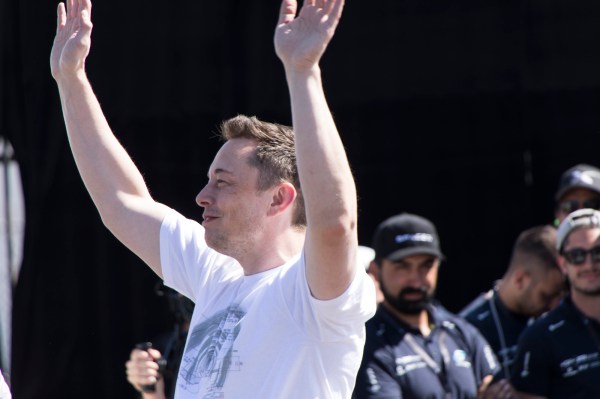Tesla’s march toward its goal of being able to produce 5,000 Model 3 vehicles per week is a very expensive prospect — but the company, which says it will have $1 billion in capital expenditures for the fourth quarter this year, says it basically has enough money to hit that target.
Despite that, Tesla wasn’t able to completely sate Wall Street’s concerns about the company’s ability to hit those production targets. After missing some estimates Wall Street set for the company’s earnings by quite a bit (you can find the full numbers below), the company is seeing some pressure on its stock today after largely getting a pass for its activities as it looks to become a massive automaker with the aura of an exciting tech company.
The company said it burned $1.4 billion in cash in the third quarter this year, while Wall Street expected it to burn $1.2 billion. This poses some questions for Tesla’s balance sheet, which has always been a big question mark for the company as it begins to ramp production of the Model 3. Tesla said it expects to hit its production target of 5,000 Model 3 vehicles per week by late Q1 2018.
All of this isn’t necessarily going directly toward the Model 3, as Tesla’s expenses can be all over the place, like expanding its charger networks, adding new stores and service centers and other kinds of expenses. But with the hype around the Model 3, which will position the company as a carmaker that hit consumers at lower price points, the company is going to have to aggressively spend to get there if it’s going to justify the kind of valuation and stock run it’s had in the past year.
“Capital expenditures are expected to be approximately $1 billion in Q4, driven largely by milestone payments on Model 3 production equipment, as well as Gigafactory 1, and further expansion of stores, service centers, delivery hubs and the Supercharger network,” the company said.
That capital expenditures nomenclature typically refers to buying or upgrading a company’s physical assets — in this case, its equipment and factories, among other things. This statement accompanied Tesla’s third-quarter results, which showed it lost more money than Wall Street expected. Tesla also said it had a cash balance of $3.5 billion going into the fourth quarter, and it will begin generating “significant” cash flows from its operations once it hits its production target for the Model 3.
“Between cash on hand, future cash flows and available lines of credit, we believe that we are well capitalized to accommodate the revised ramp of Model 3 production to 5,000 per week,” the company said in a statement accompanying its third-quarter earnings release. “Upon achieving this production level, we expect to generate significant cash flows from operating activities. Capital expenditures are expected to be approximately $1 billion in Q4, driven largely by milestone payments on Model 3 production equipment, as well as Gigafactory 1, and further expansion of stores, service centers, delivery hubs and the Supercharger network.”
Tesla’s balance sheet has always been a tricky part of the equation, though the company seemingly hasn’t had much trouble going out to raise additional capital. In May last year, for example, Tesla said it would sell an additional $2 billion in stock to fuel growth for the Model 3. Given the cost structure of, well, building and rolling out a new car, Tesla needs to make sure it has a ton of cash on hand in order to hit the often-aggressive production targets it sets for itself. As part of this as well, it looks like the company will be rebalancing its production as it moves toward an emphasis on the Model 3.
“Based on the recent acceleration in order growth, we now expect that Model S and Model X are on pace for about 100,000 deliveries in 2017, an increase of 30% compared to 2016,” the company said. “Notwithstanding these increased deliveries, we plan to produce about 10% fewer Model S
and Model X in Q4 compared to Q3 because of the reallocation of some of the manufacturing workforce towards Model 3 production. As a result, inventory level of finished Model S and X vehicles should continue to decline.”
The company’s stock price fell around 5 percent after the initial report came out, but shares of Tesla are still up 50 percent on the year. Here’s the chart:
As the company tries to hit those ramps — which CEO Elon Musk has called “production hell” several times — it’s seemingly taking steps just as aggressive at the company level. Tesla fired hundreds of employees earlier this month following what the company said were performance reviews. The company didn’t mention those layoffs in the announcement.
Here’s the final slash line for the company:
- Q3 revenue: $2.98 billion, compared to $2.95 billion Wall Street estimates
- Q3 earnings: Loss of $2.92 per share, compared to a loss of $2.29 per share Wall Street estimates
- Cash balance: $3.5 billion
- Q3 deliveries: 25,915 Model S and Model X vehicles, 223 Model 3 vehicles
- Sale projections: 100,000 Model S and Model X vehicles sold in 2017
